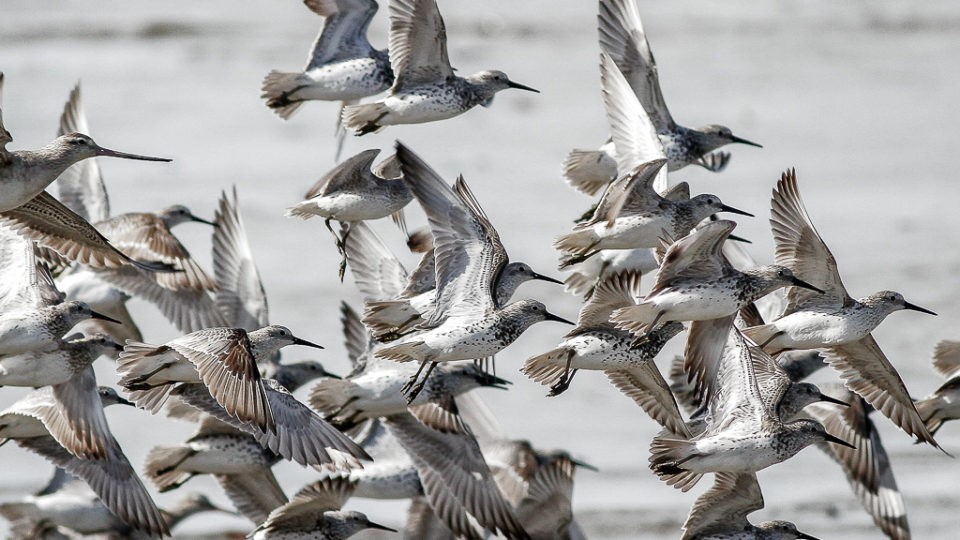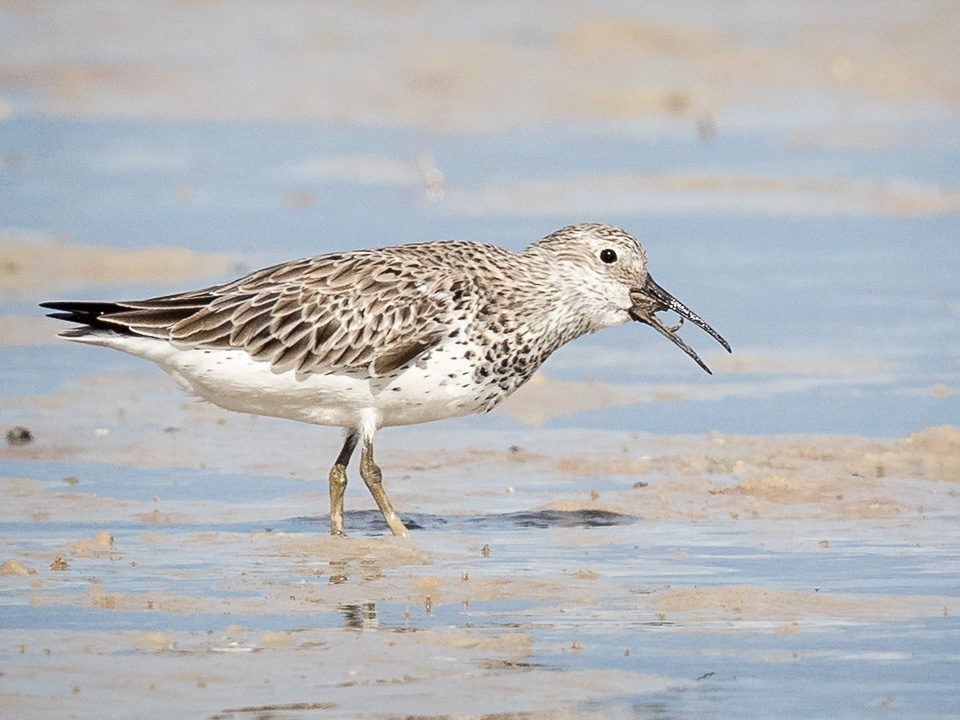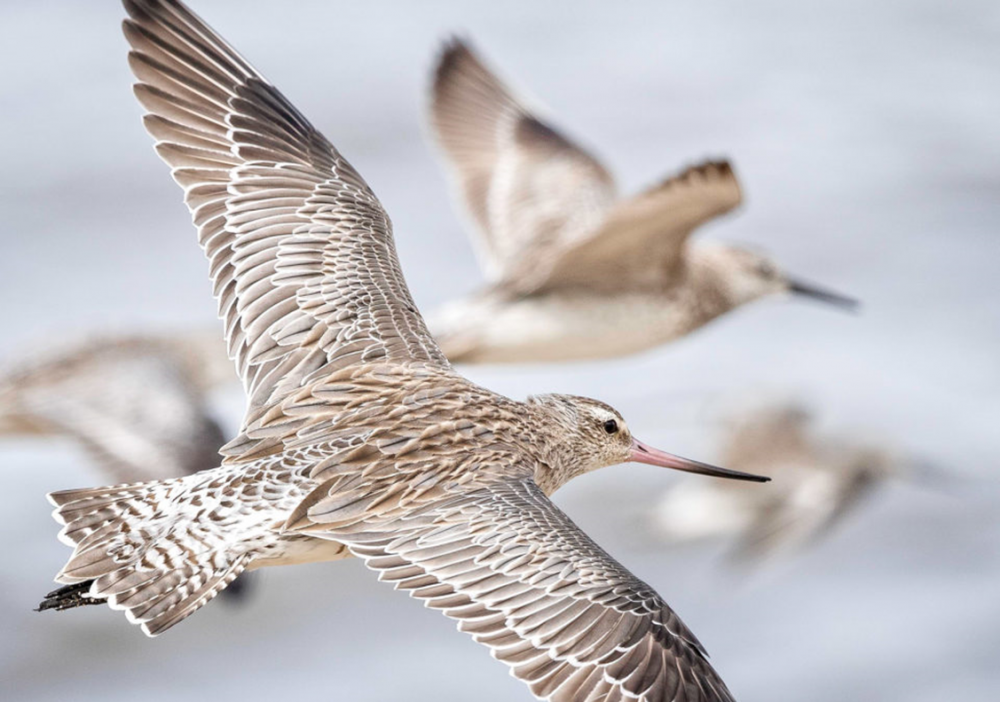It wasn’t quite on the scale of the international airlift to starving West Berliners in 1948-49, but to tens of thousands of migratory shorebirds on their way to Arctic breeding grounds, it was just as vital.
By Tony Neilson https://naturalimages.net.au

Most of the world’s non-breeding great knots call Australia home. Photo: ©Tony Neilson
The April 2018 ‘great clam drop’ (as I like to call it) was another international effort – this time to save from starvation great knots and other migrating waders that use the East Asian – Australasian Flyway.
In 2017/18, one of the coldest winters in decades had wiped out the clam population – a key food source – at two of the birds’ main staging sites on the Yellow Sea in northeast China.
Disaster unfolding
Shorebird ecologist David Melville from the Pukorokoro Miranda Shorebird Centre in New Zealand was at one of the sites (Yalujiang) in late April and saw the disaster unfolding. He was watching hungry birds arriving from Australia (the non-breeding home for almost all of the world’s great knots).
“They were flying in and looking for food that was not there,” he told ABC Australia. “Drastic problems call for drastic measures.”

Shellfish are a vitally important in the great knot’s diet – particularly when fuelling marathon migrations. Photo: ©Tony Neilson
Melville’s proposal was to leave supplementary food on the tidal mudflats for the birds. “We’re trying to put out 500 tonnes of small clams over a period of four to six weeks,” he said at the time.
Half-a-million bucks
An international effort was immediately begun to raise the half-million dollars needed to buy the farmed shellfish from nearby suppliers. In the end, most of the funding came from the SEE Foundation – a Chinese NGO.
“Nothing like this had been previously attempted anywhere else on the planet,” Melville told Natural Images. “This was a valid concern … it turned out to be very successful and the birds ate all the food provided.”
He conceded that the scheme was interfering with nature, but said the ‘endangered’ great knots needed all the help they could get. “If we didn’t put that food out the birds would probably end up starving to death. I believe that attempting intervention was the correct response.”
Repeat unlikely
However, Melville thinks it unlikely the exercise will be repeated. “It was very costly and an emergency response … to the effects of a very cold winter in 2017/18.
“Hopefully there will be more food next year, but it has to be recognised that there is a long-term trend of reduced benthic prey stocks [i.e. less food overall] at Yalujiang.”
Rick Simpson, chair of UK-based Wader Quest and one of the clam project sponsors, reported that many thousands of birds benefitted from the supplementary feeding. Around 13,000 were present at one site on one day.
“Hopefully, birds seen at the feeding sites will be seen later at their non-breeding areas – confirming that they successfully completed their migrations.”

Bar-tailed godwits swallow shellfish whole, to be crushed in their gizzard. Photo: ©Tony Neilson
Bar-tailed godwits swallow shellfish whole, to be crushed in their gizzard. Photo: ©Tony Neilson
Fresh hope
Massive reclamation of non-breeding stopover feeding grounds along coastal South Korea and southern China has decimated shorebird numbers – particularly great knots.
Although an estimated 65 per cent of the shorebird feeding grounds have been lost to development in the region since the 1960s, there is fresh hope. Birdlife Australia’s Connie Lee says there has been a shift towards habitat protection in South Korea, China and Japan.
“It’s really exciting to see a lot more enthusiasm in these parts of the world in terms of protecting these species,” she said.
©Natural Images 2018
